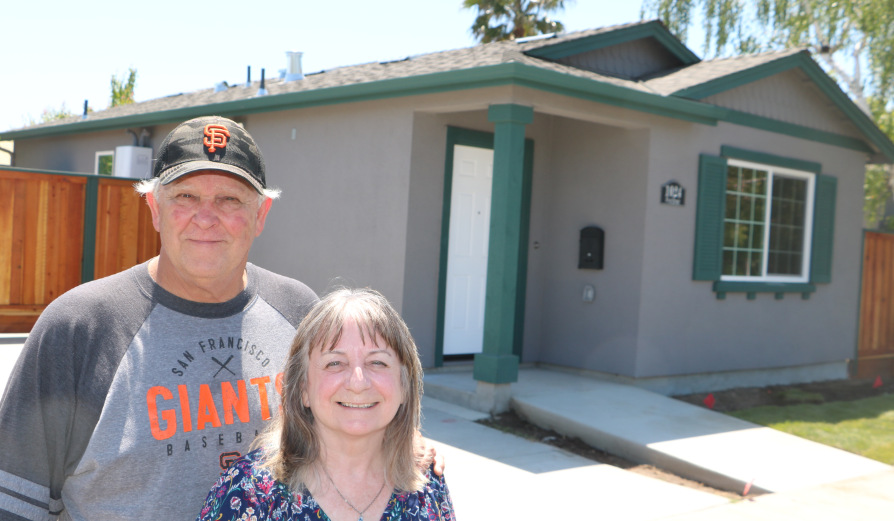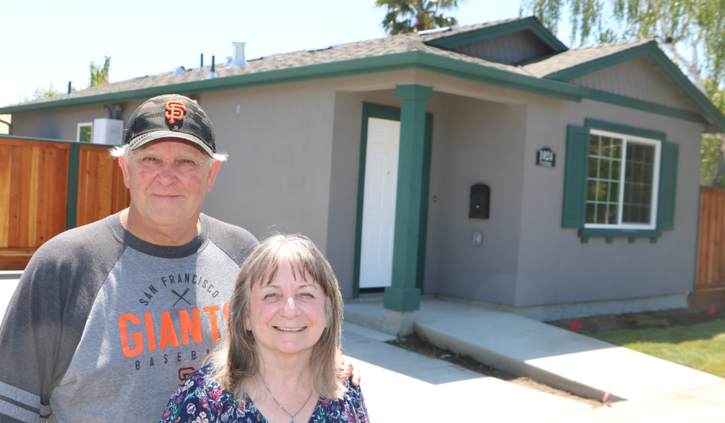Granny flats — small homes built off of alleys in older parts of town or tucked behind a home — are enjoying a steady and growing come back in Manteca.
The bureaucratic given name for the smaller-sized homes are ADUs, or auxiliary dwelling units.
There were 18 such houses built in 2022 and 25 in 2023.
So far this year, Manteca has issued building permits for 18 ADUs.
Added to the numbers when six apiece were built in 2020 and 2021, Manteca has built 73 ADUs in the past 4½ years.
The two main reasons they are built are for elderly parents or to produce additional income as rentals.
Historically, ADUs built for parents ultimately morph into rentals.
Smaller homes that are standalone ADUs aren’t tiny homes.
Tiny homes tend to be mobile and often do not have the connected infrastructure that a traditional detached single family home does.
Detached ADUs are essentially smaller versions of a standard home. They almost always have a layout that includes a bedroom, living area, bathroom, kitchen with dining area, and a laundry area. In other words, they have floorplans similar to one bedroom, one bathroom apartments without anyone living above your ceiling, below your floor, or on the other side of a wall,
Manteca has a cluster of a dozen free-standing small homes that aren’t ADUs but give you an idea of the living space. The homes on the northwest corner of Nevada Street and Walnut Avenue are currently undergoing extensive remodeling with four ready to lease.
Smaller ADUs than the aforementioned, are more like standalone studio apartments.
The ADUs are Manteca’s de facto affordable housing strategy.
ADUs typically rent for 20 to 30 percent less than a standard Manteca house that — depending on the era in which they were built — go from an average of 1,200 to 3,300 square feet.
They also rent for significantly less than the average going rate for a pre-1990 Manteca apartment that was $1,659 in 2023.
As a side note, the cluster of updated and modernize homes are comparable floorplans and touches that a new one bedroom apartment offers in Manteca but for a slightly less cost of $1,800 a month.
There are a number of advantages if Manteca found ways to encourage even more ADUs to be built in a given year.
*A possible affordable housing fee — of which the city completed a study in September of 2022 — would be superfluous. Such a fee would send housing cots upward with fees that could add $31,000 plus to the cost of the lowest priced new home sold in Manteca.
Clearly, elected leaders pursuing such a fee that high would be making at-market housing less affordable and probably significantly reduce the built of hew housing inventory that would only exacerbate the shortage for affordable housing. That said, even lower fee options recommended at the time would not result in many units being built.
*There would be no need of major infrastructure investment such as streets and sewer/water lines that are already in place.
Infill projects such as ADUs not only piggyback on existing amenities and infrastructure, but they also tend to be closer to shopping, dining, services, transit, and schools.
*Unlike subsidized mortgages the city once made through the redevelopment agency to help below-median income households buy homes, the affordability in relation to the market doesn’t disappear after deed restrictions of 15 to 25 years regarding resale limitations vanish as smaller homes almost always remain rentals.
Manteca has encouraged ADUs with lower growth fees and even has basic plan sets available.
There are several impact fees that are not collected in Manteca on auxiliary dwelling units 750 square feet or less in a bid to encourage more ADUs.
That helps ADU projects pencil out.
And if the ADU is 500 square feet or less the builder is also exempted by the State of California from paying school impact fees to further reduce development costs.
City rules are also lifted in terms of off-street parking spaces.
Couple that with the fact “off-property” infrastructure already in place such as streets, sidewalks, sewer and water lines, storm drains, and even the backbone for PG&E utilities. When you do, ADUs pencil out.
As such, they provide positive cash flow from the start for the property owners building the ADU that aren’t using them for family members such as elderly parents.
It is arguably the most effective strategy by far given unit is market driven as opposed to current efforts to cobble together 196 units of affordable housing in conjunction with the homeless navigation center being pursued at 682 South Main Street.
Such affordable projects require patching together financing — when it is available — from state and federal grants, tax credits, and private sources — and partnering with an on-profit.
They can be extremely long gestation periods such as the 48-unit Cottage Village Apartments — subsidized housing for low-income seniors — built at Cottage Avenue by Highway 99 that took more than a decade to go from initial planning to completion.
By contrast, even factoring in construction scheduling as well as supply delays and such, ADUs can easily go from construction to completion in less than a year.
An ADU is allowed to have a maximum square footage of 850 square feet in a studio-style layout, a maximum of 1,000 square feet for a one bedroom dwelling or 1,200 square feet for a handicapped accessible home.
They cannot be higher than 16 feet.
No additional off-street parking is required for an ADU. They also must have an independent exterior entrance.
There was a time when so-called “granny flats” — small secondary dwelling units accessed from paved alleys or behind existing homes — provided Manteca with a supply of affordable housing.
They lost popularity as tract development took over and many cities made then virtually impossible to build.
The current state movement that requires allowing garages conversions done to code, ADUs being built whether they are free-standing or added to and existing house, and allowing the conversion of single family homes into multiple family residences are all aimed at squeezing the most out of existing developed areas to help address California’s chronic housing shortage.
ADUs must be allowed in all zoning districts where residential uses are permitted. Local discretion for location of ADUs may be based only on the adequacy of water and sewer services, traffic circulation, and public safety considerations.
The dwelling units may be rented separately from the primary residence but may not be sold or otherwise conveyed separately from the primary residence.
To contact Dennis Wyatt, email dwyatt@mantecabulletin.com









